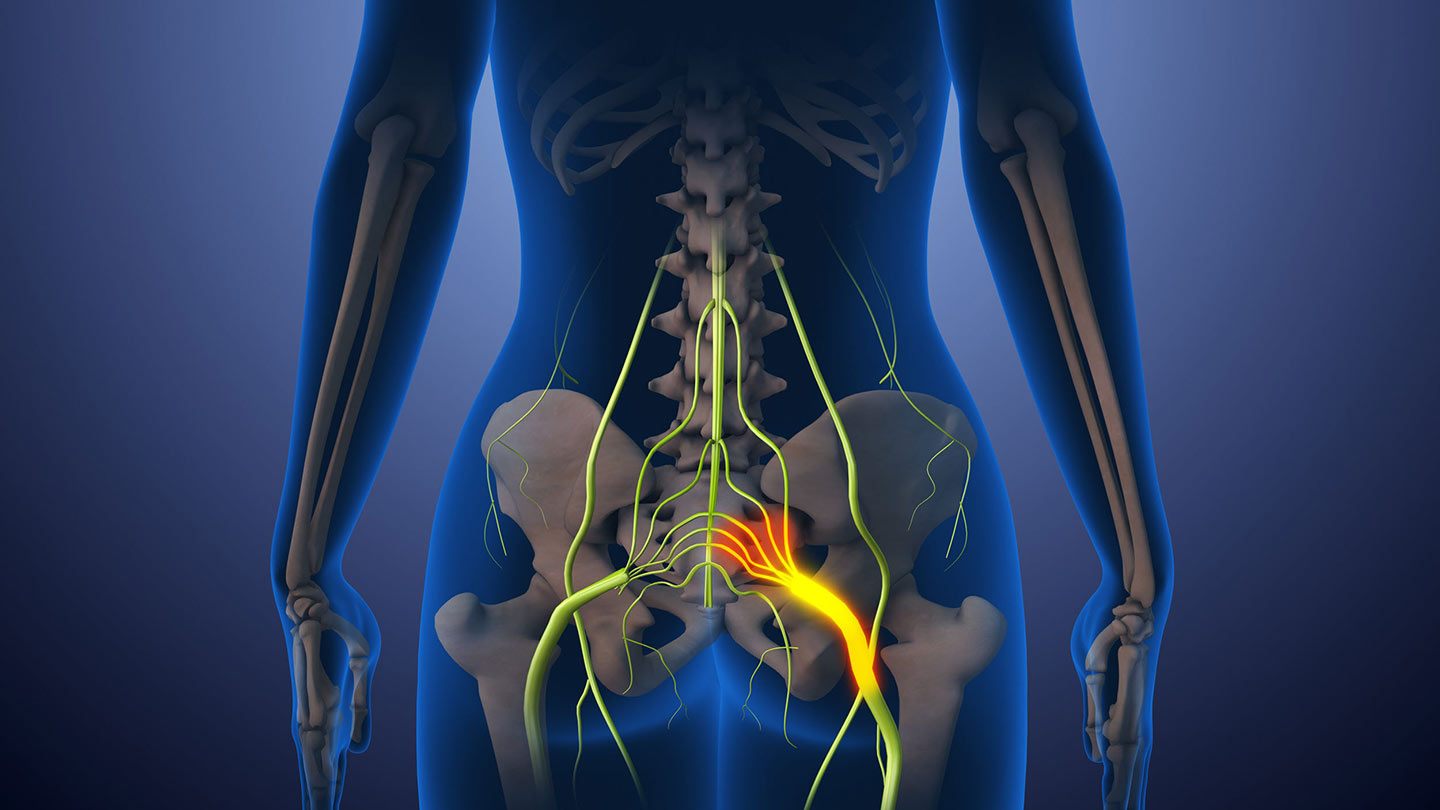Sciatica pain is a sharp, radiating discomfort that travels along the sciatic nerve, extending from the lower back through the hips and down each leg. This condition often results from herniated discs, spinal stenosis, or other underlying issues, making it essential for individuals to seek quick and effective relief. Muscle spasm and tense muscles can further aggravate this pain.
Finding methods to alleviate sciatica pain is critical, as it can severely impact daily activities and quality of life. The urgency for immediate relief cannot be overstated; therefore, this article presents various techniques that deliver fast pain reduction, ranging from stretches and exercises to topical treatments and ergonomic adjustments.
Explore the following relief options designed to provide you with prompt comfort and support as you manage your sciatica pain effectively.
What is Sciatica and Why Does It Hurt So Much?
Sciatica is a condition characterized by pain that travels along the sciatic nerve, which runs from the lower back through the hips and down each leg. It typically occurs when this nerve is irritated or compressed, often near the spinal cord. Common causes include herniated discs, spinal stenosis, or tight muscles that press against the nerve.
The pain from sciatica can range from mild to severe. Often described as sharp or burning, it may start in the lower back and radiate down one leg, sometimes reaching the foot. This radiating pain can make daily activities difficult, emphasizing the importance of quick relief through proper treatment options. Muscle weakness can also accompany sciatica, further limiting mobility.
Understanding the mechanisms behind sciatica helps identify effective pain management strategies, ensuring that those affected can return to their normal activities as soon as possible. Rapid intervention can significantly improve symptoms and enhance the quality of life for individuals experiencing this condition.
Common Triggers for Sciatica Flare-Ups
Several activities can trigger or worsen sciatica pain. Prolonged sitting is a primary factor; sitting for extended periods, especially in poor posture, places pressure on the sciatic nerve. For example, office workers who remain seated for more than 8 hours daily often experience increased discomfort.
Heavy lifting also significantly contributes to sciatica pain. Incorrect lifting techniques can strain the lower back, leading to herniated discs that aggravate the sciatic nerve. Individuals in labor-intensive jobs should prioritize proper lifting methods.
Awkward movements, such as twisting the spine while lifting or bending, can further irritate the sciatic nerve. This is common in activities like gardening or sports.
Lifestyle factors, including weight gain and lack of physical activity, exacerbate symptoms. Maintaining a healthy weight and participating in regular low-impact exercises help alleviate pressure on the sciatic nerve.
Avoiding these triggers is crucial for managing sciatica symptoms and enhancing overall mobility.
Fast Stretching Routines for Sciatica Pain Relief
- Seated Piriformis Stretch: Sit on a chair with your feet flat on the floor. Cross your right ankle over your left knee. Gently lean forward, keeping your back straight, until you feel a stretch in your right buttock. Hold for 30 seconds. This stretch targets the piriformis muscle, reducing pressure on the sciatic nerve. Perform this stretch 2-3 times per day.
- Knee-to-Chest Stretch: Lie on your back with your legs extended. Pull one knee toward your chest, holding it with both hands for 30 seconds. Switch legs. This stretch alleviates tension in the lower back and stretches the gluteal muscles, providing direct relief from sciatic pain. Repeat this stretch 2-3 times per day.
Incorporating a gentle stretch into your routine can alleviate mild ache and reduce tension. These stretches can be easily performed at home or in the workplace, offering quick relief by alleviating pressure on the sciatic nerve and improving flexibility. Always consult a healthcare provider if pain persists.
Hot and Cold Therapy: How and When to Use Them
Heat and cold therapy are effective methods to relieve sciatica pain quickly.
Heat therapy relaxes muscles and enhances blood flow, which aids in healing and reduces stiffness. Use heating pad or hot water bottles for 15 to 20 minutes at a time, ensuring they’re warm, not scorching. Cold therapy alleviates inflammation and numbs pain. Ice packs or a cold pack should be applied for 10 to 15 minutes, with a cloth between the skin and ice to prevent frostbite.
Use heat therapy when muscles feel tense or after physical activity; apply cold therapy immediately after an injury or during flare-ups to reduce swelling. Safety tips include monitoring skin response and never applying ice directly.
To integrate both therapies into a daily routine, alternate between heat and cold applications twice daily. Start with heat in the morning to loosen muscles, then switch to cold for pain relief in the evening. Consistent application can significantly improve sciatica discomfort and mobility.
Over-the-Counter Medications and Topical Creams
Common over-the-counter (OTC) medications for fast relief from sciatica pain include ibuprofen, acetaminophen, and naproxen.
Ibuprofen and naproxen are nonsteroidal anti-inflammatory drugs (NSAIDs) that reduce inflammation and block pain signals by inhibiting enzymes that produce prostaglandins, chemicals that promote inflammation and pain. Acetaminophen primarily alleviates pain by acting on the brain's pain receptors, but it does not reduce inflammation.
Topical pain relief creams or gels, such as those containing menthol or capsaicin, offer an alternative for localized pain relief. They work by creating a cooling or warming sensation that distracts from deeper pain or by reducing pain signal transmission through nerve endings.
For adults, the typical dosage for ibuprofen is 200-400 mg every 4-6 hours, not exceeding 1200 mg per day without physician approval. For naproxen, the dose is usually 220 mg every 8-12 hours, not exceeding 660 mg per day. Acetaminophen is typically 500-1000 mg every 4-6 hours, with a maximum of 3000 mg per day.
Consult a healthcare provider for specific recommendations or concerns.
Sciatica-Friendly Sleeping Positions
To reduce sciatica pain at night and promote recovery, the best sleeping positions are side-sleeping with a pillow between the knees or lying on the back with a pillow under the knees. Side-sleeping with a pillow helps maintain spinal alignment and reduces pressure on the sciatic nerve by keeping the hips aligned. The gap created by the pillow also prevents twisting of the lower back, which alleviates discomfort.
Lying on your back with a pillow under the knees maintains the natural curve of the spine, minimizing strain and providing support to the lower back. This position evenly distributes body weight, relieving pressure on the sciatic nerve.
To further enhance comfort and avoid aggravating sciatica overnight, consider these tips:
- Use a medium-firm mattress that supports spinal alignment.
- Adjust pillow height to maintain a neutral neck position.
- Regularly change positions to prevent stiffness.
These adjustments ensure optimal support and alignment, leading to reduced pain and improved recovery.
Massage Tools for Sciatica Relief
Massage tools such as foam rollers and massage balls provide immediate relief for sciatica by targeting muscle tension and pressure points. Self-massage techniques can significantly reduce discomfort by releasing tight muscles that contribute to sciatic nerve pain.
Using a Foam Roller:
- Positioning: Sit on the floor and place the foam roller under your lower back.
- Roll Forward: Slowly roll back and forth for 1-2 minutes, moving to the sides to target the glutes and hips.
- Target Areas: Focus on tight spots, applying extra pressure as needed.
Using a Massage Ball:
- Placement: Lie on your back and place a massage ball under one glute.
- Roll: Gently move your body to press the ball into tight areas for 30 seconds to 1 minute.
- Switch Sides: Repeat on the opposite glute.
Frequency: Perform these self-massages daily or as needed for optimal results. By consistently targeting the lower back and glutes, you can alleviate sciatic nerve pressure effectively.
How to Use TENS Units for Immediate Sciatica Relief
TENS (Transcutaneous Electrical Nerve Stimulation) units offer effective immediate relief for sciatica pain by delivering electrical impulses that stimulate nerves, which helps reduce pain signals to the brain.
To use a TENS unit for sciatica, follow these steps:
- Electrode Placement: Place the electrodes on the skin near the painful area or along the sciatic nerve pathway—typically on the lower back and buttocks.
- Settings Adjustment: Set the TENS unit to a comfortable intensity, varying the frequency according to personal preference. Many find a higher frequency (80-100 Hz) effective for pain relief.
- Session Duration: Use the device for 20-30 minutes per session, multiple times a day as needed.
Safety Advice: TENS units are safe for most individuals; however, avoid use if you have a pacemaker, are pregnant, or have skin irritations in the electrode area. Consult a healthcare provider for optimal effectiveness and personalized advice on treatment timelines.
Correct Sitting and Standing Posture for Sciatica Relief
To prevent sciatica pain from worsening, adjust your sitting and standing posture as follows:
Maintain Spine Alignment: Keeping the spine aligned is crucial for minimizing nerve compression. A neutral posture reduces strain on the back.
Proper Ergonomic Seating:
- Feet Flat on the Floor: Ensure your feet rest flat on the ground or on a footrest.
- Lumbar Support Pillow: Use a lumbar support pillow to maintain the natural curve of your lower back.
Standing Posture:
- Weight Distribution: Distribute your weight evenly on both feet. Avoid locking your knees to prevent excessive strain.
- Movement: Avoid prolonged standing without movement. Shift your weight periodically or take short walks to promote circulation.
Implementing these adjustments can significantly alleviate discomfort and improve overall posture. Regularly evaluate your seating and standing habits to ensure they align with these ergonomic principles.
What Can a Chiropractor Do for Sciatica?
Visiting a chiropractor for relief of sciatica is a smart first choice, when seeking conservative solutions. Chiropractors can offer effective, non-invasive treatments for sciatica by addressing the root cause of the condition. Chiropractors are skilled in spinal adjustments, which help realign the vertebrae, relieve nerve pressure, and restore proper function to the spine. This can alleviate the inflammation and pain associated with sciatica.
In addition to spinal adjustments, chiropractors may use techniques such as spinal decompression, physiotherapy, and targeted muscle therapies to help reduce muscle tension and promote healing. They may also provide lifestyle advice, including ergonomic recommendations and exercises to improve posture and core strength, helping prevent future sciatic flare-ups. These treatments are personalized to the patient’s specific condition and can be an excellent option for those seeking to avoid surgery or medication for sciatica.
When to Seek Medical Attention for Sciatica
It's essential to consult a healthcare professional if you experience persistent pain lasting more than a few weeks. This indicates a potential underlying issue that requires further evaluation. If you notice numbness or weakness in your leg, this signals that the nerve is significantly affected and demands immediate attention. Furthermore, if you face difficulty controlling bowel or bladder function, seek immediate medical help, as these symptoms may indicate a serious condition known as cauda equina syndrome.
While many relief methods can alleviate sciatica discomfort, chronic or severe pain may require more advanced treatments like physical therapy or even surgery. Early intervention can prevent complications and improve overall outcomes. Prioritize your health by recognizing these warning signs and taking action promptly.
Long-term relief from sciatica is achievable by incorporating daily posture adjustments, stretching, and maintaining a healthy lifestyle. Recognize the symptoms of sciatica early, and seek medical advice if the pain persists.
Book an Appointment
Fill out the form and we'll give you a call to schedule you.
Related Articles
Advice for Living a Healthy, Pain-Free Life.

Ergonomics for Desk Workers: Comprehensive Tips for Preventing Back and Neck Pain



